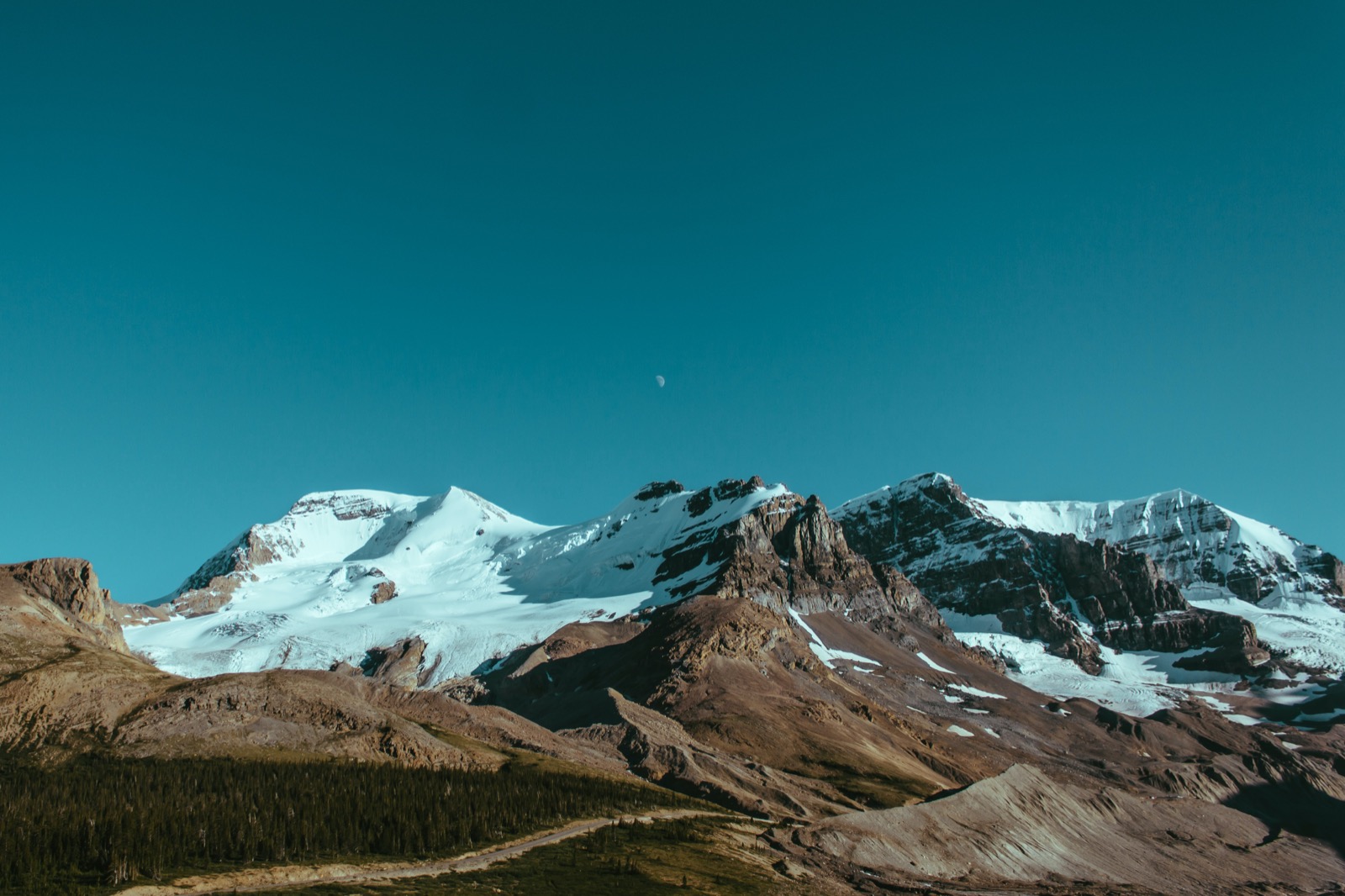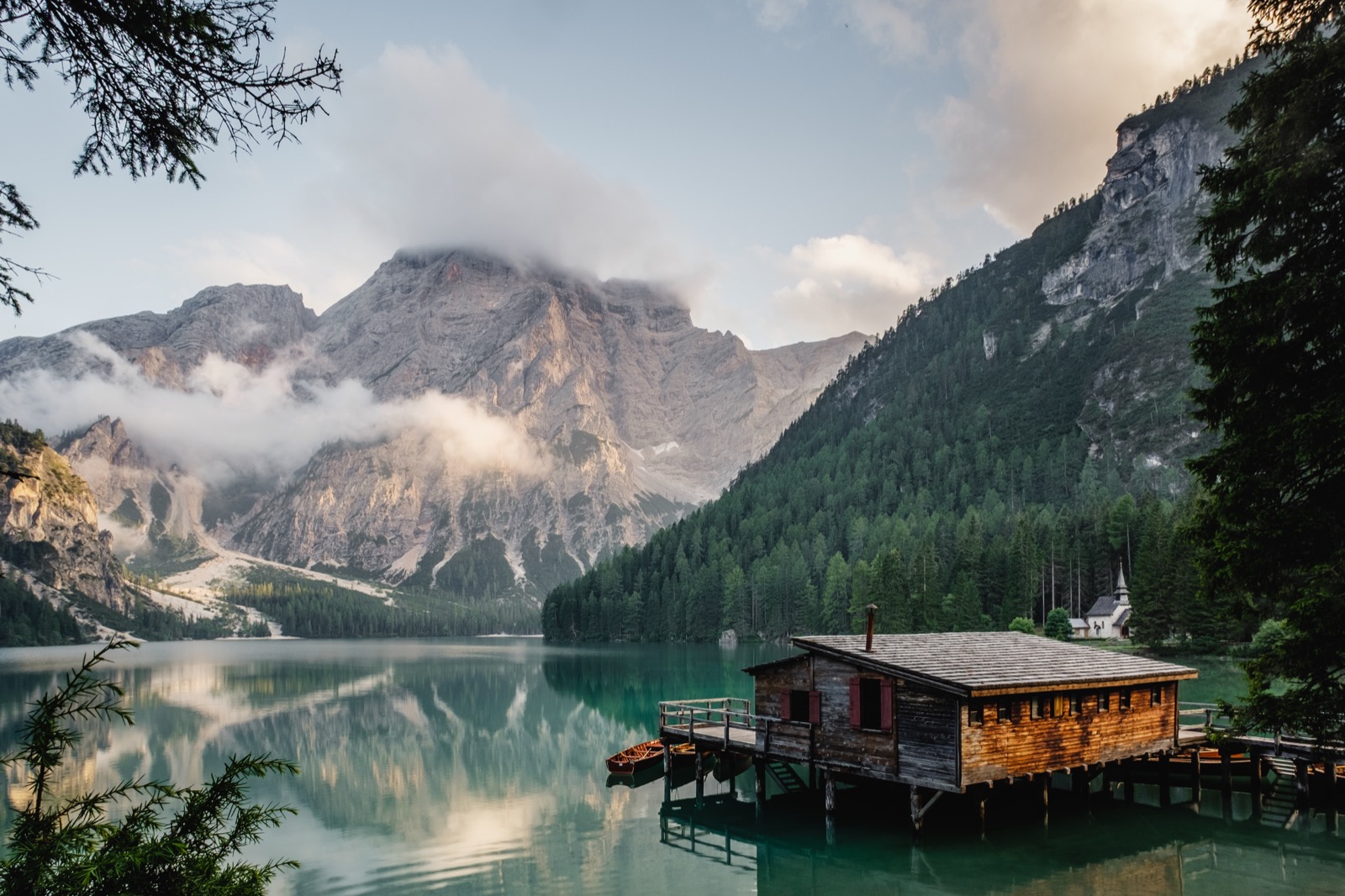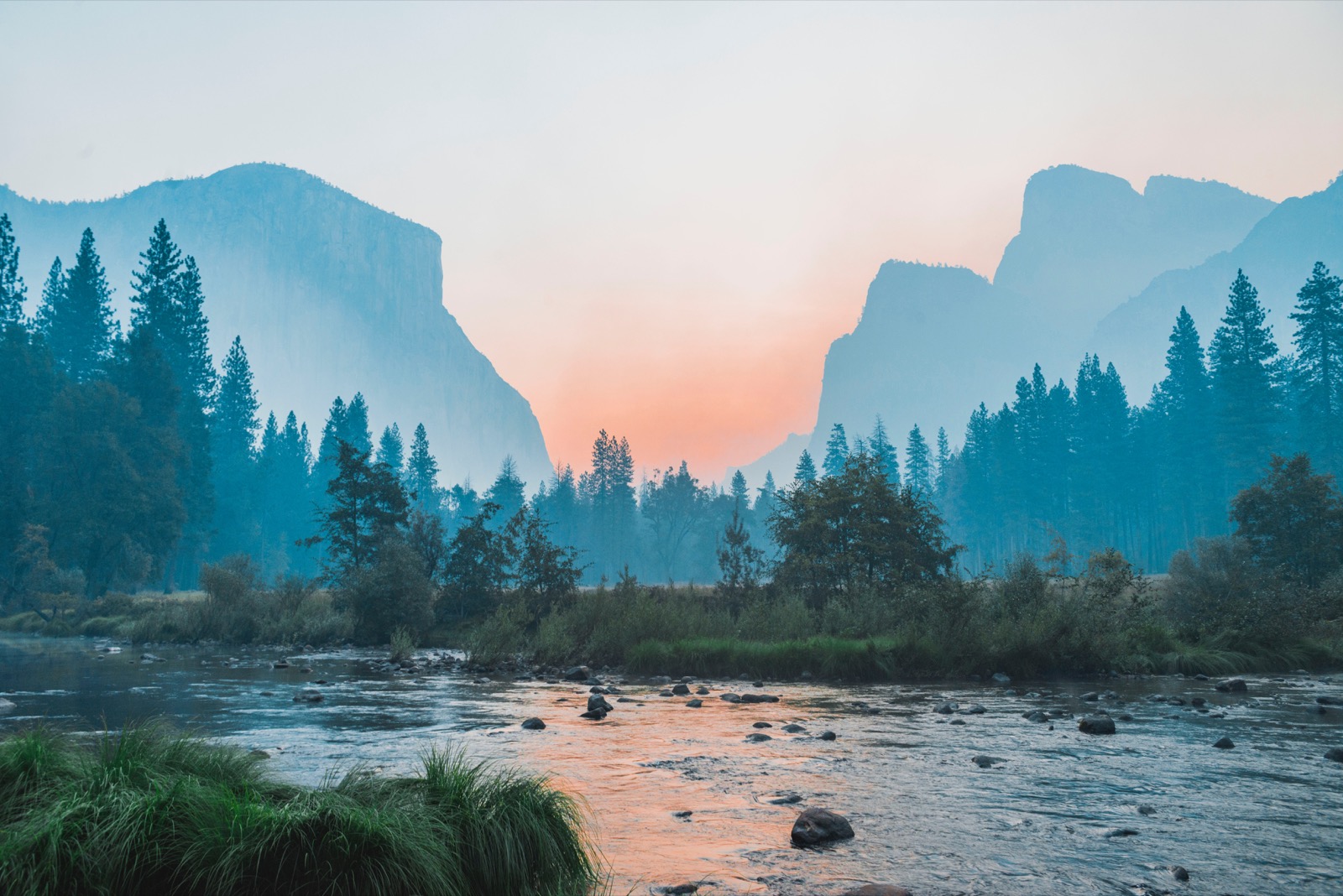As a landscape photographer, creating a strong portfolio is essential to sharing your work effectively. This task, however, can be unexpectedly difficult. Whether you face technical challenges in organizing, editing, and sharing your shots, or instead are running into problems with the philosophy behind your selected works, creating a strong portfolio can be a challenge. Want to know the best way to curate the perfect landscape photography portfolio?
This article will look at how to solve a number of challenges involved in curating the perfect landscape photography portfolio, including:
- The aesthetics and ideas that should drive your choice of photos
- The techniques for effectively curating a large library of photos
- The technical considerations of creating final versions of these shots
- The question of watermarking or otherwise protecting your art
The Aesthetics and Concepts Behind a Portfolio
The first question you have to answer to create a perfect landscape photography portfolio is: “What do I want my portfolio to do?”. What I mean by that is are you trying to sell your images, share your work with others, serve as a reference for contests or artistic endeavors, or something else? Each of these answers will mean you’ll want to make different decisions in every step of the process, including things like the images you choose, how you process them, to how you present them.
To make it even a bit more complex, you might say that your portfolio needs to cover a couple of these areas. Right now, you just want to share your work easily, but would also be open to selling an image or two to an interested buyer. Fortunately, with some careful consideration, you can craft a portfolio that can do all of these things at once, although it might take a little more careful thought than a single-purpose portfolio.
For the rest of this article, we’ll consider the average photographer whose portfolio needs to serve a couple of purposes. While it’s not solely commercial or artistic, it should be able to do both, and above all, put your work in the best light possible. If you find that you only need your portfolio to serve a specific purpose, consider which of the following aspects you can eliminate – a more focused portfolio, with every image being 5 stars, is a better choice than a portfolio with dozens of just-OK images.
Even if you need your portfolio to serve multiple purposes, don’t forget the underlying tension between portfolio size and quality. With a website, it’s easy to upload thousands of images, and quickly end up with dozens of galleries. While this can be an excellent way to share your latest work, especially compared to social media, it’s not great for a portfolio. A portfolio should be enough shots to let someone fully understand your work, but not so many that you’ve included weak, irrelevant shots.

In fact, my favorite approach is to have a single, overarching portfolio covering your major focus, then create some mini-portfolios with more works or alternate genres if necessary. For a landscape photographer, this might look like having a main landscape gallery to highlight your absolute best shots, then a few additional but separate galleries with a focus on astrophotography, panoramas, or wildlife shots. This way you can reference a single portfolio when necessary, while still providing viewers an opportunity to dig deeper into your work.
As a rough rule of thumb, I’d keep the main portfolio to 20 images or fewer. The exact number will depend on where you’re at in your photographic journey – someone just getting started might have 5 shots they’re really proud of, while a photographer with 20 years of experience might find it tough to keep it to 50 images. Even if you’re having to choose from dozens of strong images, however, I still think having a specific focus makes for a stronger portfolio.
One challenge you might face is separating your emotions from the actual quality of the shot. I know that in my portfolio, there are a few images that aren’t as armstrong as others, but they’re the product of a lot of effort on my part. All that planning, hiking, post-processing, and more has made me very attached to the photo, even if I know it’s not my absolute best shot. One thing that can help with this is to create a “short-list” of the shots you’d consider including, then get advice from your target audience. Ask friends, other photographers, or family members. Each can bring their own viewpoint to a portfolio review, and it might be significantly different than your own.
What Tools to Use When Actually Curating
My favorite tool for curating my shots is actually the piece of photo software I spend the most time in. Lightroom Classic, with its huge array of organization tools, is the perfect option for curating. Depending on how you already use Lightroom, you can curate via a couple of different methods. I have all of my completed photos marked with pick flags and make use of collections for organization purposes.
I like to use these collections for a couple of reasons. The first is that I can easily change my mind, adding and removing images without having to worry about it affecting my overall catalog. Secondly, using a collection lets you quickly preview how images flow together – viewing the collection as a grid can be a quick way to preview how a grid view webpage would look, letting you change the order of images and spot any potential problems before export.
The last big advantage of Lightroom is the ability to tweak export settings. While we’ll discuss export settings and technical considerations more in the next section, Lightroom’s export panel makes it easy to access all of the relevant settings in one spot, as well as save them as a preset. Being able to quickly export a revised copy of an image, or an entirely new image that you’re excited to add to your portfolio is very convenient.
If you aren’t already using Lightroom, you don’t need to start just to create a portfolio. You can do many of the same things with a combination of Adobe Bridge and Photoshop, or with a myriad of other software tools. For Photoshop, one of the best options is the Save for Web option. This provides one-click access to color space, resizing, and file format options, making it a great substitute for Lightroom’s export dialog.

Lastly, if you’re looking for an open-source option, consider checking out Darktable. This open-source piece of software helps you organize your shots in a database similar to Lightroom, making it a great option to try when you’re unsure if you’ll like the catalog model.
Technical Considerations
Once you’ve got your selected photos gathered up, there’s still a number of technical considerations to make sure they look their best. Depending on how you shoot, you may be starting with raw, TIFF, PSD, or JPEG files, or even a mix of those. From there, you’ll probably want to end up with a sRGB color space JPEG file. Both of those parts are important. The first choice, of color space, is pretty simple. For web use, sRGB is the best choice. While some devices have started supporting a broader color gamut, the majority of devices will still prefer sRGB, and compatibility is a key consideration when creating your portfolio.
Compatibility and convenience also play a role in the choice of file format. JPEG images are almost universally compatible with devices, while also offering a good-enough level of compression. Depending on how you’re sharing your portfolio, you may be able to use some newer formats like WEBP, but that’ll be far rarer than just going with JPEG. On the topic of compression, saving at around 80% is “perceptually lossless”, but may still result in overly-large file sizes for web use. You can use a utility like JPEGMini to shrink file sizes even further.
Another consideration that shares a lot with compression is image size. Both size and compression dictate how long it’ll take a user to download your images – this not only directly impacts user experience but also can affect your SEO and website ranking, as Google penalizes sites that take too long to download images.
Consider your typical viewer: are they going to be using a 4K display or a phone? A bigger, higher-resolution display has only grown more common over the last few years, with even phones sporting FullHD and higher displays. As a result, most of the old advice regarding web-sizes has grown stale. Uploading an image that’s only 400 pixels long on an edge will look bad on most modern devices when featured as the main element on a page. Instead, consider something like 1500 pixels, or even better, upload a high-resolution image and use a service that can dynamically serve smaller images to your website’s users – this way everyone gets an appropriate size image.
Larger images can make a greater impact on your viewers but aren’t without their downsides. Besides the already mentioned challenges with download speed, larger sizes can also make it easier for your images to be stolen and reused elsewhere. Every photographer will approach this challenge differently, but I personally view it as a no-win situation. Adding small watermarks aren’t very effective, as they can be removed in seconds with Photoshop, leaving a seamless result. Large watermarks are distracting and can leave your viewer with a poor impression of the work itself.
Fortunately, there are a few small measures you can take. Many content management systems allow you to disable the right-click feature – while this can be easily circumvented via a screenshot, it’s a quick and easy way to cut down on the most basic image theft.
In fact, NextGEN Pro (which comes with The Photocrati Theme) offers this feature.
A more effective, but more complicated, the measure is to use a service like Pixsy. When you upload your images to Pixsy, the service will search the internet for any uses of your image, then alert you. If these are unlicensed or undesirable uses, you can have Pixsy automatically take action on your behalf.
One final consideration when preparing your photos is making any tweaks to brightness and contrast. As a photographer, you’ve probably worked hard to set up your monitor with a neutral brightness and color balance – most of your viewers won’t have taken the same measures. This can result in your images appearing dull or too dark on their devices. To fight this, you might consider adding a slight bump in exposure, contrast, or saturation when necessary. A quick way to check this is to seek out the worst display you have access to, and check your images on it. If they look good on that 19 inch Dell LCD from 2008, they should look good everywhere! Just like before, this is also going to be impacted by who your audience is – if you’re shooting for a high-end audience, consider checking on an iPhone or Macbook instead.
Conclusion
Curating a portfolio can be a difficult, but immensely rewarding task. Sorting through all your images is never easy, but when using a tool like Lightroom, Adobe Bridge, or Darktable, things should go a bit faster.
Once you’ve got your images in mind, consider creating a website to share them – Photocrati offers dozens of starting designs, responsive displays, built-in galleries perfect for portfolios, and ecommerce support, all in one WordPress theme.
I hope you’ll embrace the challenge of curating the perfect landscape photography portfolio! For more information on building a winning website and photography portfolio, make sure to follow us on Twitter and Facebook for more updates!
Start selling prints online today
Pick up the Photocrati theme and take advantage of beautiful designs, and NextGEN Pro’s incredible ecommerce features and automated print fulfillment.
